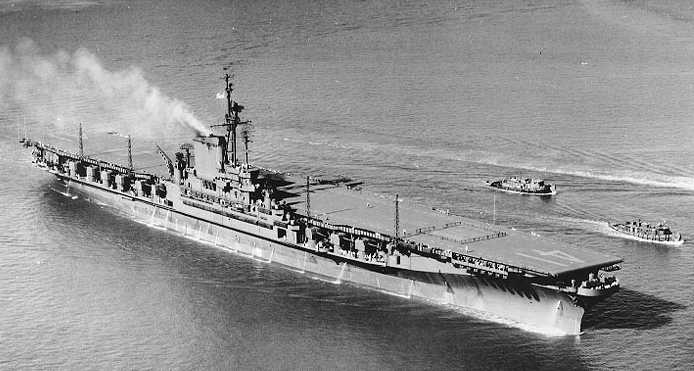|
This gun was not as popular as the 5"/38 (12.7 cm) Mark 12, possibly because the larger projectile and cartridge cases resulted in faster crew fatigue. Essentially, this weapon was simply a longer version of the 5"/38 (12.7 cm) Mark 12 and should not be confused with the later 5"/54 (12.7 cm) weapons which included automatic ammunition feeding provisions. These guns were gradually removed from the Midway class carriers as weight compensation for growth in other areas. Some of these mountings were then reused on new-construction Japanese destroyers. At least two mountings still exist, one at the Military Museum of Southern New England in Danbury, Connecticut and the other at the White Sands Missile Range in New Mexico. Nomenclature Note: This was the last USN 5" (12.7 cm) gun that was best known by the gun barrel Mark number designation. All subsequent 5" (12.7 cm) designs are known by the mounting Mark number designation. |

USS Midway CVB-41 as completed in September
1945 with eighteen 5"/54 (12.7 cm) guns
|
| .
|